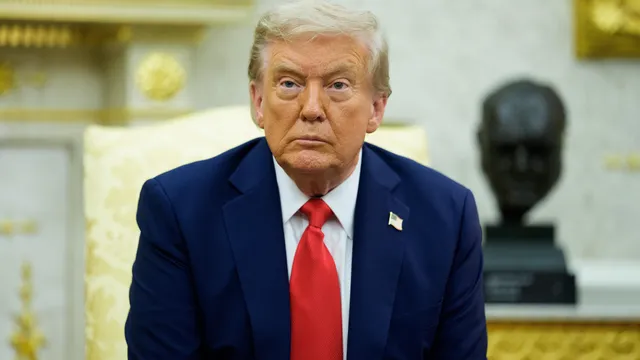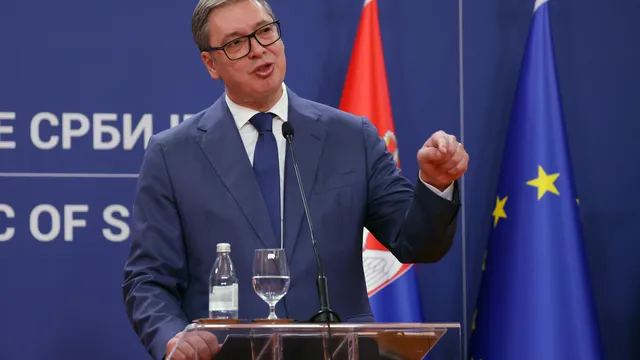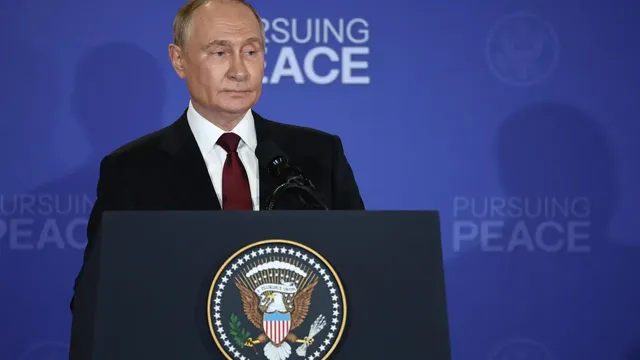In many countries around the world, there is a tendency to perceive Donald Trump as a happy fool. It is true that he stands out more for his brutality, vanity, vulgarity, and poor language skills than for the quality of his analysis and the finesse of his thinking. But it would be wrong to forget that he is a man of power and money. He quickly understood what could be useful to him in strengthening US dominance and increasing its wealth. It was inevitable that he would take an interest in artificial intelligence – and that is exactly what he did without delay. On his first day back in the White House in January 2025, he sharply increased decisions affecting this sector, writes the French publication Slate.
This fact went almost unnoticed by the public, which was preoccupied with his countless other measures—such as customs tariffs. The Republican billionaire has a talent for filling the media space, and artificial intelligence is not the most common topic of conversation in our pubs or at McDonald's. It was only after the release of a free version of ChatGPT in November 2022 that the topic became a hot one.
A quick look back takes us back to the US, where in the summer of 1956, the first real scientific conference on the subject was held at Dartmouth College in Hanover, New Hampshire. The forum brought together about twenty participants—all Americans, except for two Englishmen. One small but significant detail: the work of one of the organizers, Professor John McCarthy (1927–2011), was funded by the US Army, which has always been interested in new technologies. Three years later, another meeting, organized at UNESCO headquarters in Paris, attracted a thousand computer scientists.
However, the topic remained niche for a long time. It appeared more often in literature and cinema—the most famous example being Stanley Kubrick's film 2001: A Space Odyssey, in which the on-board computer HAL 9000 attempts to take control of the spaceship. Then came the spectacular competitions in which chess players and gamers lost to computers.
The real breakthrough came at the end of the 20th century with the global advent of the internet. Companies developing new technologies were concentrated in Silicon Valley, California, and received the support of President Bill Clinton, who even chaired conferences on the subject. Young designers in jeans and T-shirts, with their free-spirited attitude, seemed closer to the Democratic Party than to the Republican Party, traditionally associated with the oil and automotive industries.
In 2016, Barack Obama, in an interview with Wired magazine, emphasized that the US strongly supports artificial intelligence. He was referring primarily to specialized AI, expected to be used in healthcare and transportation, to reduce greenhouse gas emissions and combat climate change. Obama acknowledged that his country's dominance could be a problem, but stressed the need for mutual respect and restraint when working with countries with different values.
In March 2018, a commission led by mathematician and MP Cédric Villani presented a report in France entitled "Giving meaning to artificial intelligence: for a national and European strategy." Since then, AI has become a topic of political and geostrategic importance. In February 2025, the European Commission launched the InvestAI initiative to mobilize €200 billion in investments, formalized in a plan for an "artificial intelligence continent."
The situation cannot be delayed. On January 20, 2025, on the day he took office, Donald Trump repealed Joe Biden's October 2023 executive order on safe and reliable artificial intelligence. This marked the end of security and personal data protection measures. This was exactly what the leaders of the big tech companies wanted. With Trump, they got everything—unrestrained AI development and billions of dollars in potential profits, without regulation.
On January 21, 2025, Trump unveiled Project Stargate, a joint venture between Oracle, OpenAI, and Japanese conglomerate SoftBank, which envisions investing "at least $500 billion" over four years in AI infrastructure in the US. An initial tranche of $100 billion has already been allocated.
On July 23, the White House also presented a national action plan for artificial intelligence. The goal is clear: to win the race and remove all barriers to American leadership. The plan has three pillars: accelerating innovation by supporting private initiatives; strengthening infrastructure—from data centers to energy projects—by loosening environmental regulations; and international action to promote American technologies and counter Chinese influence.
On the day it was adopted, Trump signed four new executive orders on AI, including one against "ideological biases" in the responses of large public systems with artificial intelligence. "There is no place for ideologies that promote diversity, equality, and inclusion," he said.
Europe is already feeling the pressure—upcoming tariffs, new clashes over GDPR, and the European Artificial Intelligence Act. American giants are receiving explicit support from Washington against European regulations.
In this context, it is not surprising that Silicon Valley leaders are fighting for influence in the White House. The sector is satisfied – its demands are being heard and there are no regulatory barriers. Even the federal government can acquire shares in companies such as Intel if necessary. News of possible government support sent Intel shares up 7% on August 14, before falling 4% on August 18.
US stock markets are booming thanks to the prospects for artificial intelligence. The S&P 500 index jumped 34% on August 15 from its April low. Nvidia shot to the top in market capitalization with over $4.4 trillion, followed by Microsoft, Apple, Amazon, Alphabet, and Meta.
It is not certain that the colossal investments will bring the expected profits, but the influence of these companies on the world will only grow. And that is already a real threat. | BGNES

 Breaking news
Breaking news
 Europe
Europe
 Bulgaria
Bulgaria







